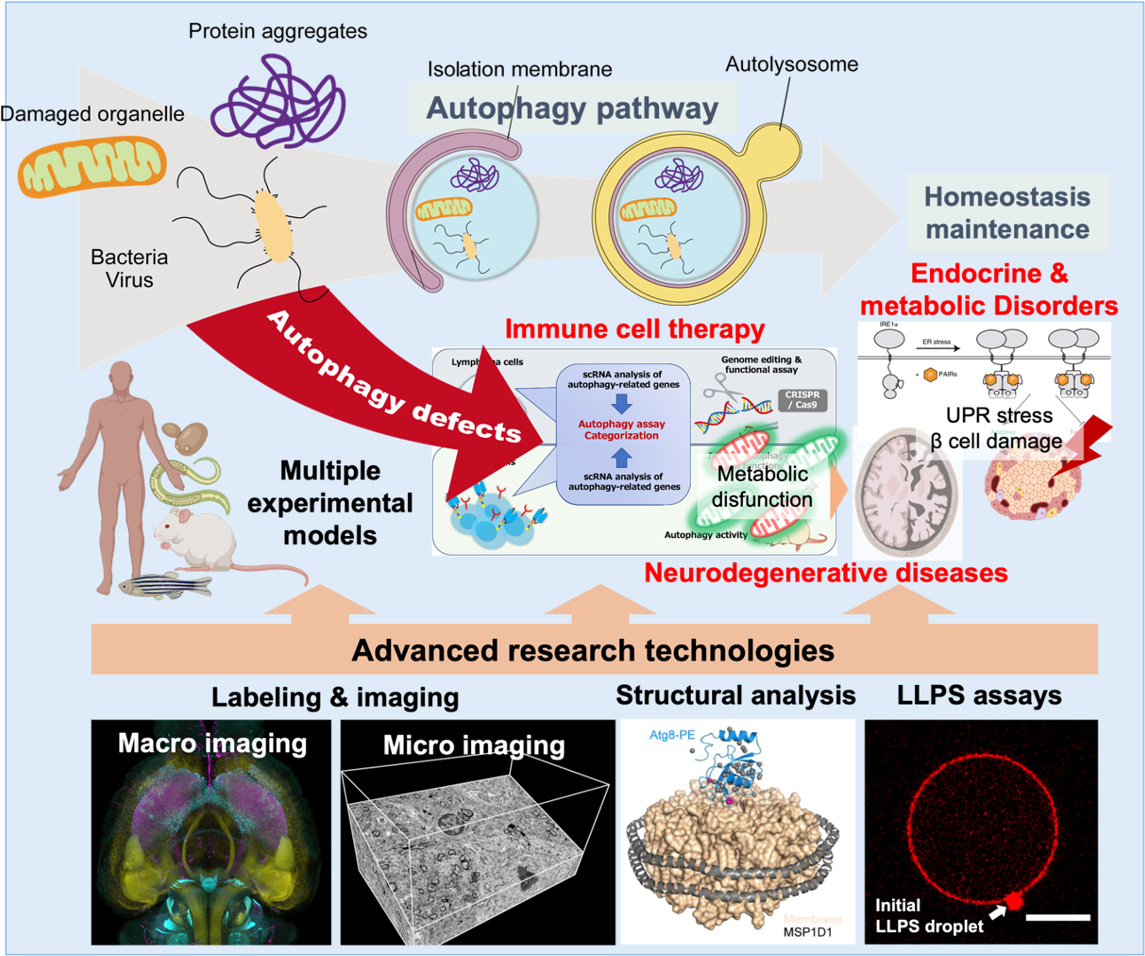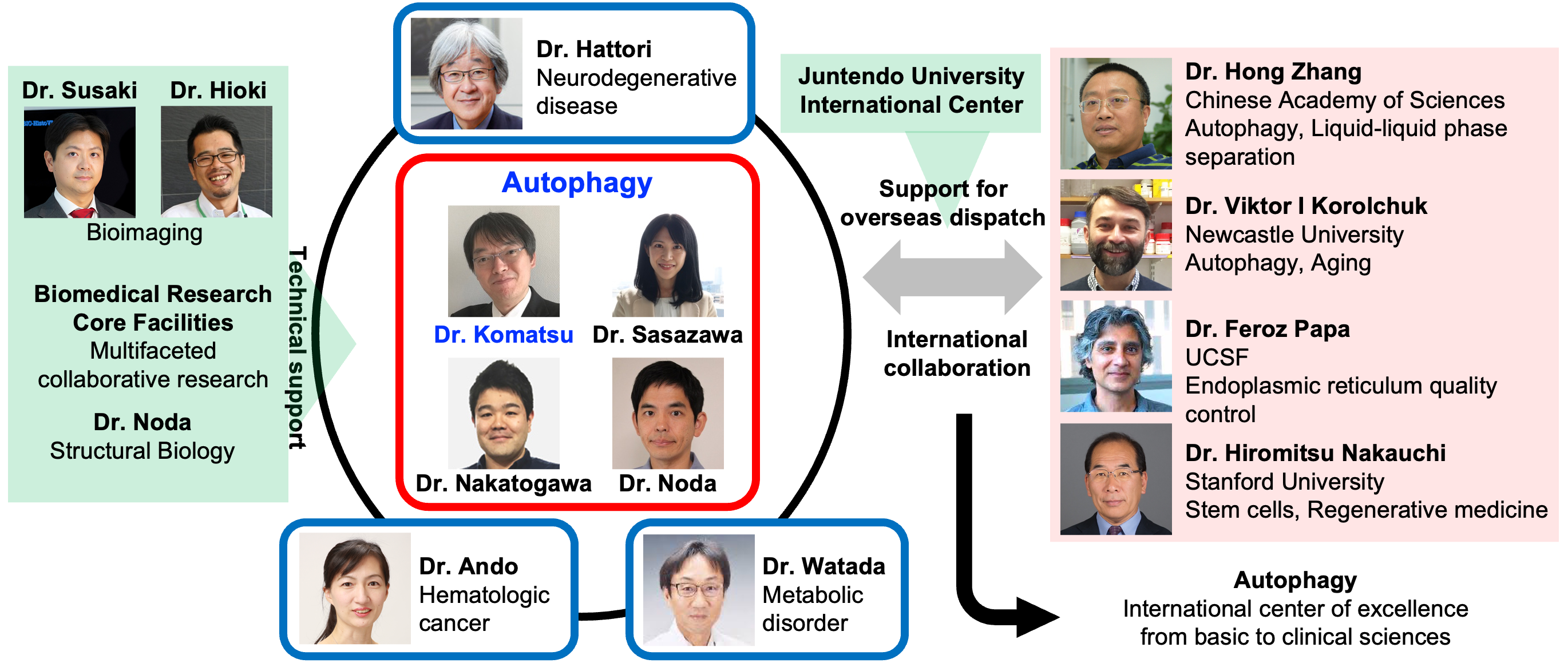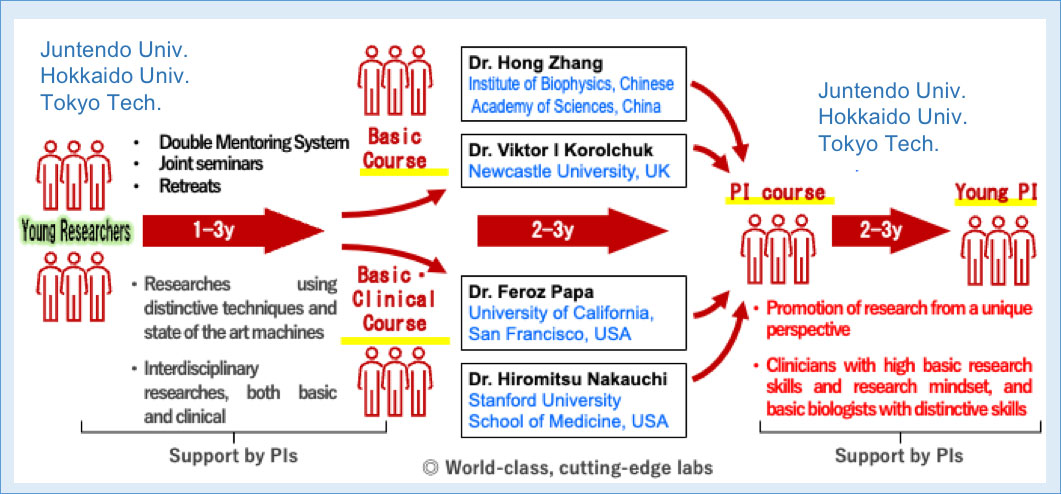Research Overview
Purpose and Significance of the Research
Expansion of Autophagy Research
Autophagy is an intracellular degradation pathway induced in response to cellular emergencies such as nutrient starvation. Autophagosomes surrounding a portion of the cytoplasm fuse with lysosomes, resulting in the degradation of cellular components down to their constituents, in the case of proteins, amino acids (Fig. 1). The discovery of autophagy in yeast by Dr. Ohsumi and his colleagues and the subsequent identification of autophagy-related genes have led to a better understanding of the molecular mechanism of autophagy while the reverse genetics has advanced our understanding of basic physiological functions such as “maintenance of amino acid pool” and “quality control of intracellular proteins and organelles” (Fig. 1). Autophagy has generally been considered a non-selective degradation pathway. However, recent studies have shown that phase-separated droplets, protein aggregates, and organelles such as mitochondria and endoplasmic reticulum are selectively recognized, sequestered, and degraded, and that dysfunction in selective autophagy is associated with various age-related diseases. In other words, proteostasis and organellostasis induced by selective autophagy play important roles in maintaining cellular homeostasis and individual health. Furthermore, it has become clear that autophagic flux decreases with age. However, neither the working principles of selective autophagy nor the molecular mechanisms underlying its dysfunction and the development of age-related diseases are well understood.

In this study, we will focus on selective autophagy and use various model organisms to elucidate the working principles and physiological functions of selective autophagy. In addition, we aim to elucidate the mechanisms of age-related decline in selective autophagy and the associated mechanisms of metabolic diseases, cancer, and neurodegenerative diseases (Fig. 2).

Organization of the Project Team
Multifaced and Multi-layered Autophagy Research
In this study, six world-leading autophagy researchers (four domestic and two overseas), two experts specializing in bioimaging and fluorescence three-dimensional imaging by tissue transparency, and three physicians who specialize in hematologic cancer, endocrine and metabolic diseases, and neurodegenerative diseases will work together to elucidate the molecular mechanisms of proteostasis and organellostasis through autophagy (Fig. 3).
The research in the area will be linked through sharing information and materials related to factors involved in autophagy and selective autophagy. Moreover, each group will develop their research using various model organisms such as yeast, nematodes, zebrafish, and mice. The exchange of information across diverse model organisms will contribute to a deeper understanding of the functional evolution of autophagy and the elucidation of new physiological functions. In addition, multi-scale imaging technologies that can cover the individual (macro), cellular (meso), and even microstructural (micro/nano) levels will be developed to form the basis for comprehensive analysis of complex hierarchical systems.

Plan for Fostering Early-career Researchers
Development of Young Researchers
For “fostering basic research skills,” a double mentor system will be introduced, in which each young researcher will be assigned a mentor from both the basic and clinical groups. We will organize a retreat meeting annually to provide an opportunity for young researchers to present the progress of their research projects. To foster a “broad perspective,” we will encourage interaction among young researchers, their independence through rotations between basic and clinical labs, and joint seminars organized by young researchers involving both basic and clinical labs (Fig. 4 left). Young researchers who have acquired high research skills will be actively encouraged to study abroad. PIs in Japan will match them with overseas researchers in order to accurately support their participation in top-level overseas research teams. Upon their return to Japan, we will support young researchers who possess a strong independent mindset to “promote research from a unique perspective that goes beyond autophagy” (Fig. 4, right). This will facilitate the emergence of new research fields by young researchers and enhance their opportunities to become independent.
